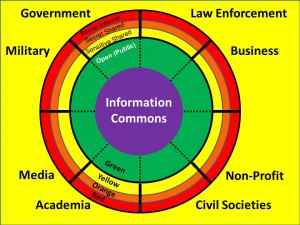 Tear Down the Swing Sets
Tear Down the Swing Sets
NICHOLAS DAY – Slate
As the father of two Waldorf educated daughters, and the husband of a career Waldorf teacher, I have observed the truth of this report.
Ronlyn kept baskets of bits and pieces in baskets in her classroom, and not a single formal toy. It was fascinating to watch the inventiveness of her 5 year olds, and the many uses to which a corn cob, some pieces of 2×4 lumber, and colored scarves could be turned as her students created imaginary worlds. Their play required imagination in a way no video game, or complete miniature recreation could possibly stimulate.
What surprised me was that Ronlyn often had to teach her children to play when the school year began. Initially they would just sit, waiting to be entertained by some electronic gadget, or to push buttons. Play is the business of childhood, because it stimulates the brains of children, and imagination is an essential part of the process. Modern toys which leave nothing to the imagination, and risk-free plastic playgrounds completely miss this point.
In 1888, the psychologist Stanley Hall published a story about a sand pile. A minor classic, it describes how a group of children created a world out of a single load of sand. These children were diligent, they were imaginative, they were remarkably adult.
More than a century later, at the architect David Rockwell’s Imagination Playground in lower Manhattan, small humans scurry back and forth all day long, carrying Rockwell’s oversized blue foam blocks from self-devised task to self-devised task. These children are intent, they are cooperative, they are resourceful. The scene resembles nothing so much as Stanley Hall’s sand pile-with each grain of sand much bigger and much bluer. (Except for the bits of actual sand, that is.)
More than any playground in recent memory, the Imagination Playground has inspired an outburst of excitement. It’s a hit with the hip parents who take their kids to Dan Zanes concerts, and is just as crowded as one. But it also represents something much more mundane: the triumph of loose parts. After a century of creating playgrounds for children, of drilling swing sets and plastic forts into the ground, we have come back to children creating their own playgrounds. Loose parts-sand, water, blocks-are having a moment.
The resurgence of loose parts is an attempt to put the play back in playgrounds. The late 1960s and early 1970s were a time of exuberant playground design, culminating in the great Richard Dattner adventure playgrounds in New York City. Then the grownups got skittish. Down came the merry-go-rounds and the jungle gyms, and in their place, a landscape of legally-insulated, brightly-colored, spongy-floored, hard-plastic structures took root. Today, walking onto a children’s playground is like exiting the interstate: Regardless of where you are, you see the exact same thing.
Read full article.






